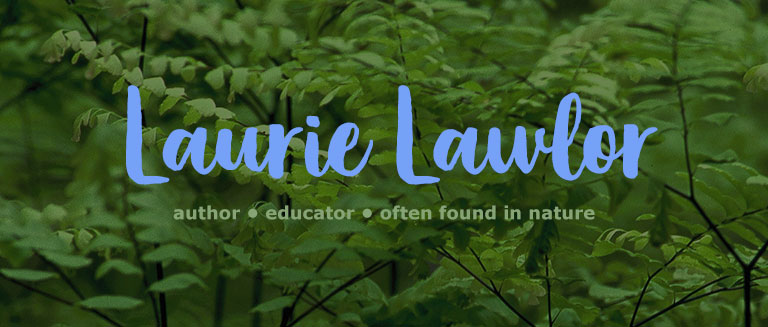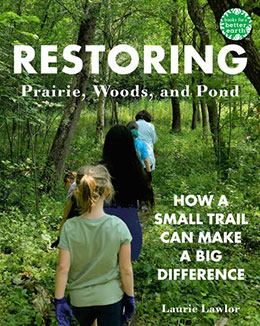Restoring Prairie, Woods, and Pond: How a Small Trail Can Make a Big Difference
Author, Laurie Lawlor
As a writer for the past 40 years, prairies as ecosystems have had an abiding fascination for me. My first book, an historical novel published in 1986, Addie Across the Prairie, was inspired by my great grandparents’ Dakota Territory homesteading experience in the vast prairies east of the Missouri River. I was intrigued by what it must have been like for a young girl to adapt to this new, totally foreign environment — an enormous, complex landscape called “the Land of Begin Again” that once stretched from horizon to horizon.
My most recent book, Restoring Prairie, Woods, and Pond: How a Small Trail Can Make a Big Difference (Holiday House, April 2023), full-color nonfiction for readers age 10–14, provided me with another opportunity to investigate this marvelous, mysterious environment. This time my research took me to Wisconsin where prairies once thrived before the early 19th century.
I originally discovered the idea for this book thanks to a friend and fellow environmental activist who suggested that I visit Eagle Nature Trail. This remarkable conservation project in the small village of Eagle, WI has restored and maintained native prairie and two other ecosystems: an ephemeral pond and woods, on what had once been an overgrown, garbage-strewn eight-acre lot. With only a bare-bones budget, local volunteers managed to create an outdoor classroom and community resource that highlights native heritage environments.
The first time I walked the trail, which connects the local elementary school and the public library, I was immediately smitten. What impressed me was the spontaneous joy of a group of third graders with clipboards, paper, and pencils who sat cross-legged on the ground beside the prairie sketching towering coneflowers.
I became even more intrigued when I heard about the restoration project’s early turning point in spring 2010. A few hardy volunteers trekked through the abandoned lot’s thick buckthorn and other invasives and discovered something remarkable: native hoary vervain. Frog song revealed another hidden gem: an almost inaccessible ephemeral pond—a rare wetland. A few struggling woodland natives provided evidence of original forest.
The forgotten wilderness wasn’t a dead zone after all.
I spent months interviewing early trail project organizers, teachers, volunteers, and local folks—everyone from librarians and early residents to volunteer firemen and business owners. Primary source detective work took me to local historical societies and university libraries, where I did a deep dive into early letters, diaries, newspapers, maps, photographs, original surveyor journals, and research compiled about early Indigenous peoples who made this part of Wisconsin their home. Prairie Enthusiasts Landowner Services Coordinator Dan Carter was essential in helping direct me to the last remaining unplowed remnant of the enormous Eagle Prairie that once covered this part of Waukesha County.
I was privileged over the course of a year — despite the challenges of Covid-19 — to witness and take part in visits to the trail with students from pre‑K through fifth grade at Eagle Elementary. Their spontaneous comments, poetry, and stories about being outdoors are an essential part of the book.
My goal has always been to find ways to inspire kids (and grown-ups) to understand and love the land where they live so that they will help protect it. I was especially pleased by a starred review from Kirkus that captures so well the description of Restoring Prairie, Woods, and Pond: How a Small Trail Can Make a Big Difference: “This is activism at its most accessible: the beautiful struggles of a region and community to make a large difference in a small world. A magical and timely story of ecosystems restored to their former glory.”
Originally published in The Prairie Promoter, a newsletter from The Prairie Enthusiasts, Vol. 36, No. 1, Spring 2023



